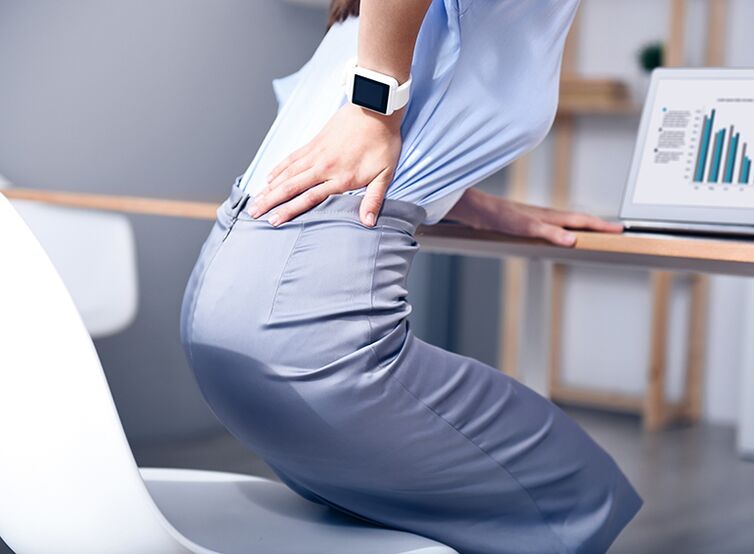First, the doctor notes that there should be no lower back pain at all in the norm:

If pain syndrome is rare - such as after weight lifting, exercise, or an uncomfortable situation - then this is the version of the norm. But if the pain shows up regularly — every time you sit in an uncomfortable chair — it’s a reason to be careful and look for the cause.
With pain that occurs semi-annually or once a year only after traumatic factors, you should not rush to the doctor. But if the pain syndrome becomes chronic or enters a stronger phase and then returns to the lungs, this is already a reason to contact a specialist. The neurologist complements:
In addition, a single but unreasonable acute pain, as well as a sharp increase in pain syndrome, may be the reason for discussion with a specialist. Especially if the pain radiates to your legs or other parts of the body. This can lead to other unpleasant sensations: loss of sensitivity, "goose humps" on the skin, a burning sensation. In such cases, you should consult a doctor.
Why can my lower back hurt?
According to the doctor, a common cause is myofascial pain syndrome, which is pain associated with abnormal muscle tension in the lumbar region.
Abnormal muscle syndrome occurs precisely because we sit uncomfortably, exercise ourselves, lift weights, says the doctor. As a result, the muscles are cramped. But more often, the root is compressed in the spine - this is another neuronal nature of the pain.
The neurologist explains that the roots leave the spinal cord and extend to different parts of the body, including the lower back. And when pressure is put on these nerves, you can feel pain in different parts of the body: the thighs, as well as the coccyx, sacrum, and even the abdomen.
The third option is pathology of the internal organs. These can be problems with the kidneys, intestines, and urology or gynecology. In this case, back pain indicates the presence of other diseases.
We also add that the pain itself is of two types: nociceptive (i. e. , inflammatory) and neuropathic.
The first involves inflammation of the muscle fibers - this manifests itself in myofascial pain syndrome and is associated with a traumatic factor. This pain is usually dull, accompanied by an increase in local temperature when the lower back is palpable.
Neuropathic pain manifests itself differently: burning sensation, goosebumps, numbness, coldness, decreased sensitivity. Even a small injection in the lumbar region can make the pain worse. If you experience such symptoms, see a neurologist immediately. And in general, the answer to the question of which doctor to go for because of back pain is clear: a neurologist.
Can pain be treated at home?
Some people think that the problem of low back pain is solved by changing the chair. The neurologist is sure: it is always easier to see a doctor.
Of course, you can also change more comfortable chairs one by one. But it may turn out not to be the question. While you should definitely have a comfortable office chair for work, it would be nice to get up every two hours and do an easy physical activity for yourself: bend down, bend down to change your lower back.
A cushion or roller placed under the back works according to a similar principle:
We sat in the usual way and then put a pillow. We stayed in this situation a bit - it was removed again - advises the neurologist. - Such a lumbar support is also useful. You can change the angle of the monitor, including moving it slightly to the right, slightly to the left. This changes the load - both in the lower back, in the chest region and in the neck.
If you need to relieve the condition now, your doctor will point out that only dry heat should be used to treat lumbar pain:
Under no circumstances should you go to a hot bath in this situation. But electric and salt heating pads (in the form of bags made by grandmothers) help a lot. Various applicators will also work. These are mats with needles: if you lie on it, the muscle tone will go away.
To do this, your doctor advises you to combine a short steroid with non-steroidal anti-inflammatory drugs and use a topical anti-inflammatory ointment:
If he did all this and the pain went away in 3-4 days, then there is no problem, we could say. If the pain doesn’t go away, there’s no more option: you should definitely see a doctor.























